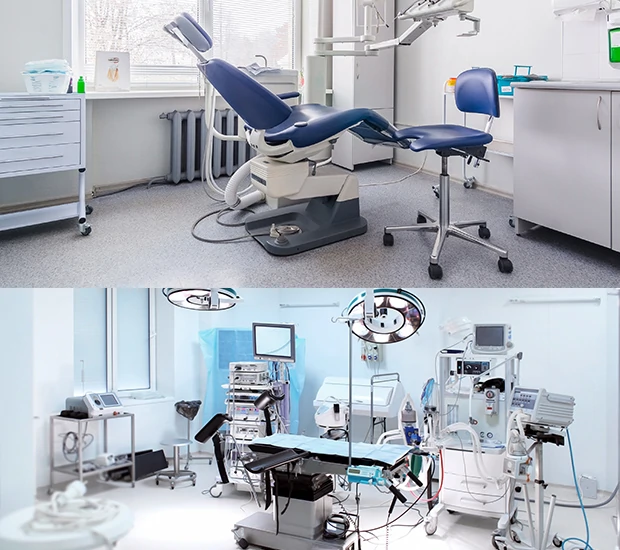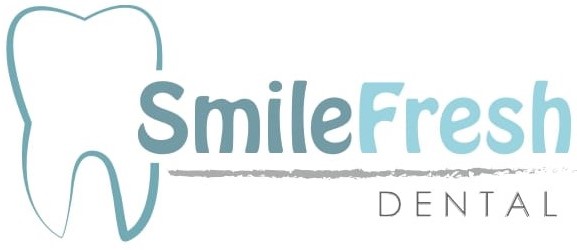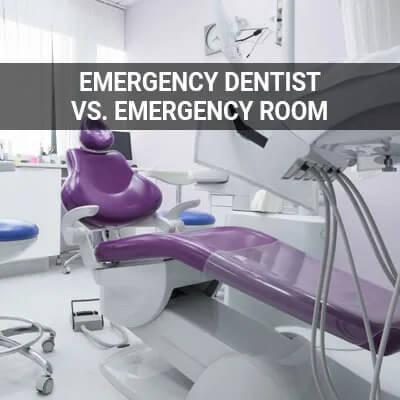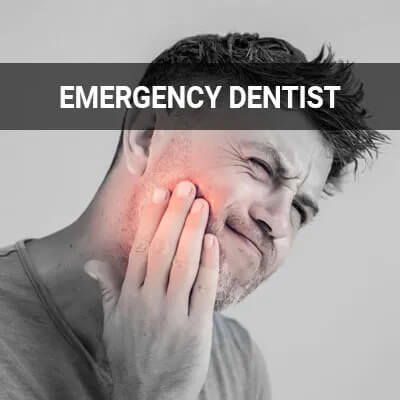
When someone is suffering from severe pain or other serious dental issues, emergency dental care may be needed. Although many people experiencing oral issues can wait to schedule a regular appointment with their dentist, some situations require immediate treatment. Emergency dental care is necessary in certain acute situations and can stop severe pain, prevent chronic issues, and even save an individual’s life.
Emergency dental care is available at Smile Fresh Dental in Auburn Hills and the surrounding area. It may be difficult to understand what constitutes an emergency when it comes to dental problems. However, there are certain signs that indicate when someone should pursue more immediate care.
Ignoring a dental issue can have long-term consequences and can affect other teeth, the gums, or the underlying jaw bone. Knowing when a regular or emergency visit should be made can help control the problem more efficiently. Call us at (248)-255-4585 if you have dental questions and are unsure whether you should seek emergency treatment.
When To Seek Emergency Dental Care
Like a number of other health conditions, the American Dental Association states that a dental emergency can be life-threatening. Serious issues that need immediate attention include infection and ongoing bleeding. Certain traumas, especially those that involve facial bones, also require immediate treatment, as they can cut off the airway and restrict breathing. Seeking immediate dental attention for these issues can prevent trips to the ER at the hospital.
Uncontrolled bleeding and difficulty breathing are not the only reasons to get emergency care. There are numerous other urgent dental conditions that indicate an appointment should be made right away. Some of these issues and their symptoms include:
- Infection: Infection can be caused by numerous things, and it can be localized or more general. Common signs include swelling, red gums, pain, and pockets of pus. An infection may also result in a fever.
- Pulpal inflammation: According to Medical News Today, this is inflammation of the pulp, which refers to the tissue, blood supply, and nerves found in the middle of a tooth. It is often caused by a cavity infection and often is indicated by sensitivity, swelling, and pain.
- Dry socket: Dry socket can occur after the removal of the tooth, most commonly a wisdom tooth. It occurs when a blood clot becomes dislodged or does not form properly, which exposes the bones and nerves in the gums. Throbbing jaw pain, bad breath, and an unpleasant taste in the mouth are all possible symptoms.
- Tooth fracture: A fractured tooth can occur from an acute injury or from biting something hard. A fracture may be easy to spot if it is an obvious break. Additional signs to watch for are pain, temperature sensitivity, and swelling.
“Serious issues that need immediate attention include infection and ongoing bleeding.”
What Procedures Emergency Dental Care Covers
The specific type of procedure used is largely dependent on the symptoms and issue. For infections, the dentist acts to fix the problem, such as removing decay from a lost filling, and then possibly prescribes an antibiotic to kill off the harmful bacteria. Pulpal inflammation may be caused by a cavity, injury, a fractured tooth, or repetitive trauma. Potential procedures used include disinfecting and sealing or removing the tooth.
For a dry socket, Healthline describes that the dentist cleans the socket to prevent infection and ease the pain and then pack it with gauze. Often pain medication is recommended to provide relief. Depending on the severity of a fractured tooth, common procedures include bonding, placing a crown, root canal, or extraction.
“The specific type of procedure used is largely dependent on the symptoms and issue.”
Non-Emergency Issues
Certain signs that indicate potential emergency situations are also signs of non-emergency ones. Therefore, if there is any doubt, it is still a good idea to make an immediate appointment. Bleeding is one example. Although some bleeding after a dental procedure is normal, it should only last around 24 to 48 hours, in most cases. If the bleeding is intense and uncontrollable, it is a good idea to visit the dentist right away.
Some dental emergencies are nonurgent and can wait a day or two to be seen. These include a small crack or chip in a tooth; a lost crown, filling, or bridge; a dull toothache; and food stuck between two teeth.
“Certain signs that indicate potential emergency situations are also signs of non-emergency ones.”
Check out what others are saying about our dental services on Yelp: Emergency Dental Care in Auburn Hills, MI
When Pain Occurs
Pain is another common sign of various dental issues that can range from minor to serious. If the pain is dull, intermittent, or both, it is probably all right to wait for a regular appointment. However, pain that is sharp and constant indicates an emergency, so it is recommended to make an immediate appointment even if there are no other signs. WebMD also states that jaw pain can also be a sign of more serious dental issues.
“However, pain that is sharp and constant indicates an emergency, so it is recommended to make an immediate appointment even if there are no other signs.”
 Emergency Dentist vs. Emergency Room
Emergency Dentist vs. Emergency Room
If you experience a dental emergency, it is important to know an emergency dentist is just a phone call away. Many dentists who provide emergency services make themselves available 24 hours a day, as emergencies can arise at any time. Emergency dentists are professionals who treat walk-in and last-minute patients who require immediate care.
Emergency dental care is available at Smile Fresh Dental in Auburn Hills and the surrounding area. In the case of a dental emergency, you should ideally contact our office first. However, there may be times — such as when an issue arises at night, over the weekend, or on a holiday — when your first instinct is to rush to the emergency room. In these situations, carefully consider the severity of the problem and whether it necessitates ER care.
Dental emergencies can arise at any time of day or night, and in a variety of situations. When one does, call Smile Fresh Dental at (248)-255-4585 to get the immediate treatment you need.
When To Go Straight to the ER
Per the American Dental Association, the number of dental-related ER visits nearly doubled, from 1.1 million to 2.1 million, between 2000 and 2010. Despite the increase in numbers, there are actually very few dental-related concerns for which patients should head immediately to their hospital’s ER department.
When a Patient Experiences Trauma to the Face
If a blow to the face or accident results in chipped, cracked, or lost teeth, an emergency dentist should be equipped to handle the situation. However, when the accident or incident causes extensive facial trauma, such as broken bones, puncture wounds, lacerations, or damage to the soft tissues, it may be a good idea for the injured party to seek medical care before emergency dental care. Emergency dentists may have the capacity to restore oral health, but most cannot set broken bones, sew up lacerations, or perform other extensive medical procedures.
When an Emergency Dentist Is Unavailable
If someone experiences a dental emergency aside from those mentioned above, and if an emergency dentist is not immediately available to handle it, then the patient should head to the hospital. Though ER personnel may not be able to treat the underlying condition, they can help the patient manage the pain and other symptoms until an emergency dentist becomes available.
"There are actually very few dental-related concerns for which patients should head immediately to their hospital’s ER department."
When To Call a Local Emergency Dentist First
In the majority of oral health emergencies, patients should contact their emergency dentists before heading to the ER. In addition to helping patients manage symptoms, dental professionals can treat underlying conditions and ensure they do not grow worse. For individuals who are not sure what constitutes a "dental emergency" as opposed to a non-urgent yet uncomfortable situation, the ADA provides guidance. The most common situations that characterize a dental emergency are the following:
- Bleeding that will not stop
- Infection accompanied by swelling or pain
- Painful swelling around or in the mouth, with or without infection
- Chipped, broken, or dislocated teeth
- Abscess with localized pain and swelling and no signs of complications
- Loss of a permanent or temporary restoration
Other problems that may necessitate immediate but not emergency care include broken, irritating, or malfunctioning dentures; oral sutures; and bent or broken orthodontic appliances or wires.
"In addition to helping patients manage symptoms, dental professionals can treat underlying conditions and ensure they do not grow worse."
What Emergency Dental Treatment Entails
Emergency dental treatment looks different for everyone, as no two dental issues are exactly the same. However, some occurrences are more common than others, which means there are certain treatments emergency dentists perform more often than others. Examples of frequently performed emergency dental procedures include:
- Tooth extraction
- Tooth replacement (placing a knocked-out tooth back in the socket)
- Filling or crown replacement
- Tooth restoration
Regardless of what brings a patient to an emergency dentist’s office, dental teams typically thoroughly clean the mouth and around the affected area, take X-rays of the mouth, and focus on pain and infection management.
"There are certain treatments emergency dentists perform more often than others."
Check out what others are saying about our dental services on Yelp: Emergency Dentist vs. Emergency Room in Auburn Hills, MI
Frequently Asked Questions
Q. How do you know you need to visit an emergency dentist?
A. Emergency dental issues are ones that require immediate attention to either preserve the tooth or alleviate pain and infection. However, because the definition of a dental emergency is vague for most people, patients should call their dentist if they have any concerns. Otherwise, pay attention for severe pain, exposed roots, excessive bleeding, infection, and swelling.
Q. How do emergency dental care costs compare?
A. Unfortunately, in almost all instances, emergency dental visits are more expensive than regular visits. However, how much more depends on the dentist you visit and the treatment necessary. That said, you should not let cost deter you from seeking immediate care.
Q. Does insurance cover a visit to the emergency dentist?
A. If you have dental coverage, it may cover the cost of emergency dentistry. However, you should review your policy or talk to your provider to get an accurate answer. Dental insurance does not cover visits to the ER.
Q. Will your health plan cover a dental-related ER visit?
A. If you visit the ER for an emergency dental issue, your medical coverage should cover the cost of the visit. It should also cover the cost of prescriptions related to the issue. However, again, you should check your policy to see what it does and does not cover.
Q. When are emergency dentists open?
A. The job of an emergency dentist is to be available when other providers are not. As a result, most emergency dental offices accept walk-ins 24/7. Many require patients to call an emergency hotline first, which will connect them to the dentist.
Questions Answered on This Page
Q. When should one seek emergency dental care?
Q. What procedures are performed under emergency dental care services?
Q. What non-emergency issues should still be examined?
Q. Why should patients seek professional dental care in cases of emergency?
People Also Ask
Q. When should I go straight to the emergency room?
Frequently Asked Questions
Q. What are the main goals of emergency dental care?
A. In general, there are three main goals for immediate treatment. One is to relieve pain. Another is to save any teeth in danger, and the third goal is to stop or prevent infection.
Q. Why is a dental infection considered an emergency?
A. Untreated infection can quickly result in serious problems. An oral infection requires immediate dental care because the infection can spread to other areas of the body. Swelling, pain, nausea, fever, and pockets of pus indicate that emergency care is required right away.
Q. Is a cut inside the mouth an emergency?
A. A cut may or may not need emergency attention. The area should be cleaned, and the bleeding should stop with gauze and pressure. However, if the cut is large and the bleeding does not stop, the person may need emergency dental care.
Q. If a temporary restoration falls off, do I need emergency dental care?
A. It depends on how it happened. Denture adhesive may be used to fit the restoration back in place until a regular appointment is made. However, if trauma caused it to fall out and there is pain and bleeding, it is an emergency.
Q. Will a patient still need to make a regular appointment?
A. Emergency dentists do everything they can to fix an acute situation. However, along with emergency dental care, the patient will probably need to make a regular appointment for additional treatment. Even if additional procedures are not necessary, a follow-up dental appointment is usually required.
Quality Dental Services Can Transform Your Smile
By visiting us as soon as possible, our team can help get you the professional treatment you need. Instead of waiting around and allowing the symptoms to get worse, we can provide you with treatment options.

Scan here to view this page, Preventative Dental Care, on mobile
Dental Emergency Terminology
|
|
|
|
|
|
|
|
|
|
Call Us Today
Fast care for a dental emergency can be crucial. If in doubt about whether you are experiencing a dental emergency, call us at (248)-255-4585 for an appointment in our Auburn Hills office.
Helpful Related Links
- American Dental Association (ADA). Glossary of Dental Clinical Terms. 2021
- American Academy of Cosmetic Dentistry® (AACD). Home Page. 2021
- Colgate®. Lost Filling Or Crown. 2021
- Orajel™. Toothache & Denture Pain Relief. 2021
- WebMD. WebMD’s Oral Care Guide. 2021

Scan here to open directions to Smile Fresh Dental on mobile
About our business and website security
- Smile Fresh Dental was established in 2015.
- We accept the following payment methods: American Express, Cash, Check, Discover, MasterCard, and Visa
- We serve patients from the following counties: Oakland
- We serve patients from the following cities: Auburn Hills, Bloomfield Hills, Troy, Pontiac, and Rochester Hills
- Norton Safe Web. View Details
- Trend Micro Site Safety Center. View Details



